Cranes can be the difference between easy construction and tough construction. Many materials have to be hoisted up the building being constructed for construction to go on smoothly. While this is true, a crane business will still have to know the best cranes for each construction to avoid disappointing its clients. For this, businesses must take time to learn the ropes of their venture before making any investments.
Table of contents
Cranes: market share and demand
Factors to consider when buying a crane
Types of cranes
Target market for cranes
Cranes: market share and demand
The global market size of cranes was $36.36 billion in 2021. This was after a 2.7% growth from the previous year. The global market for cranes is shifting to promoting renting of cranes instead of buying. In addition to this, major players seek to develop stronger cranes that can bear more load to profit from the growth expected in the industry. There are also high investments in the industry to develop technologies that enable smart factories in the manufacturing sector.
Factors to consider when buying a crane
This segment will focus on essential tips that every business should consider before purchasing.
Load to be carried
Each crane is suitable for a particular weight. The truck-mounted crane can hold a maximum load of 25 t. The jib crane can carry loads of up to 15 t, while the tower crane can lift 18 t.
Terrain of the site
Rough terrain will require a rough terrain crane, while an indoor site will require an overhead or jib crane. The tower crane is suitable for outdoor sites as well. Businesses should consider the terrain of the site before making a purchase.
Access to the project site
Some cranes are mobile and can go to any site, while others are huge and cannot access all sites. Due to its size, the tower crane will not be suitable for small and inaccessible project sites. A truck-mounted crane or mobile crane would be better.
Cost of the crane
Cranes are very costly due to the technology involved and their convenience. The tower crane costs $100,000-$200,000, while the jib crane costs between $3000-$5000. An overhead crane will cost between $10,000-$50,000. Businesses should consider the amount they are budgeting for a crane before purchasing.
Working heights
The jib crane can reach 230 ft, while the tower crane is suitable for buildings as tall as 265 ft. The overhead crane will hoist loads up to 80-100 ft high. Before settling on a crane, prospecting businesses need to know the heights they will be working with to make an informed decision.
Types of cranes
Businesses can choose from many types of cranes as listed below.
Telescopic crane
The telescopic crane has a tubular boom and allows other tubes to be fitted inside each other.
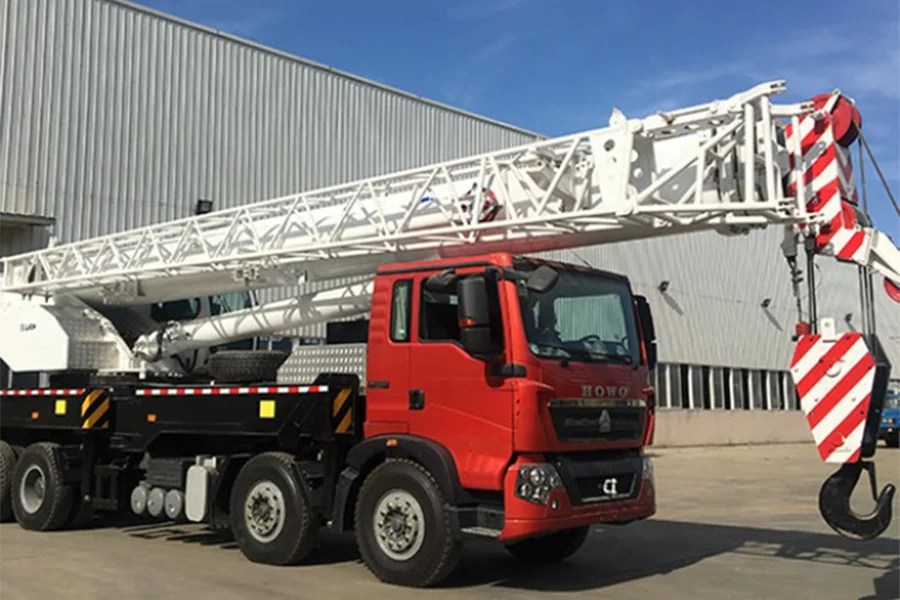
Features:
- It uses hydraulic mechanisms to extend or retract the boom.
Pros:
- It is easily maneuvrable.
- It offers precision even with heavy loads.
- It is easy to set up, hence suitable for emergency or rescue jobs.
Cons:
- It is labor-intensive when setting up.
- It has high maintenance costs, repair, and depreciation.
Mobile crane
A mobile crane is a simple cable-controlled machine with a telescopic boom attached to its platform.
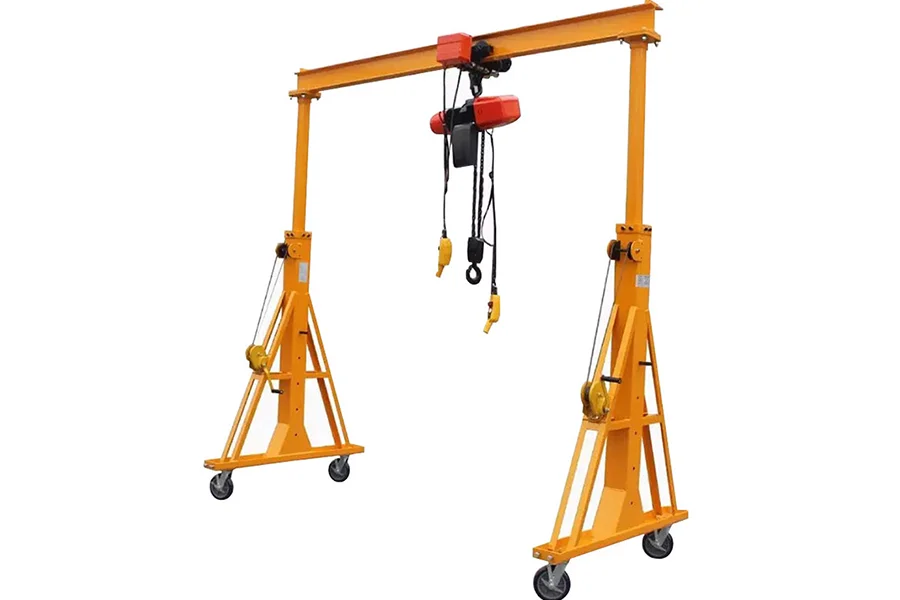
Features:
- It has two blocking damage or audible warning devices.
- It is equipped with appropriate load limit brakes.
- It has safety devices and limit switches.
Pros:
- It is flexible and can access places other cranes cannot.
- It is easy to set up.
- It does not require a lot of space.
Cons:
- It moves very slowly because of its heavy weight.
Truck-mounted crane
A truck-mounted crane is a truck with a crane at the rear or behind the cab that is used to load and unload goods on the truck.
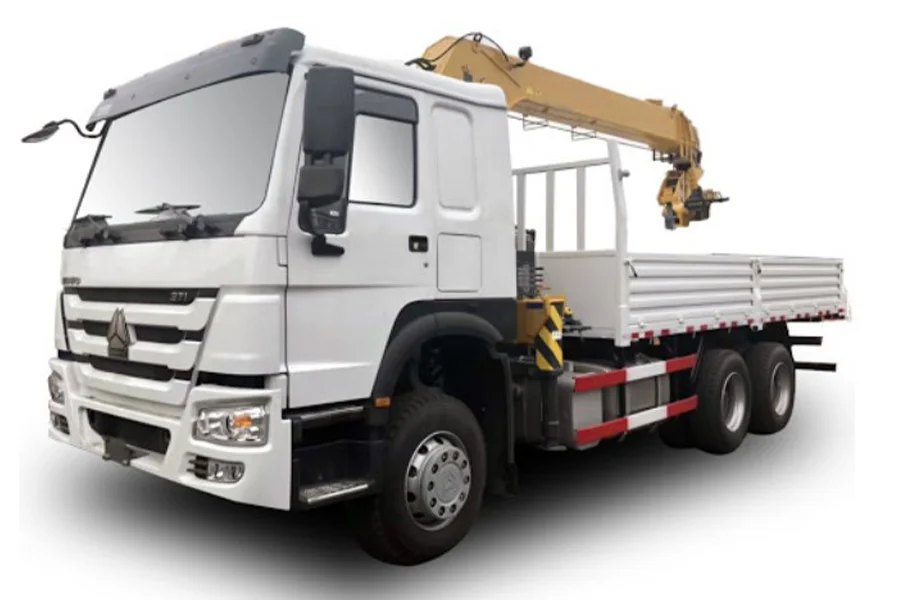
Features:
- It has automatic functions such as loading and unloading itself.
- It functions as a straight boom but can be folded.
Pros:
- It has shortened prep work.
- It can better access areas.
- It has fewer overall costs.
- It requires less space for operation.
Cons:
- It cannot carry loads above 25 t.
Tower crane
A tower crane is a modern crane that utilizes a lever and a balance to lift weights. They are primarily used in the construction of tall buildings.
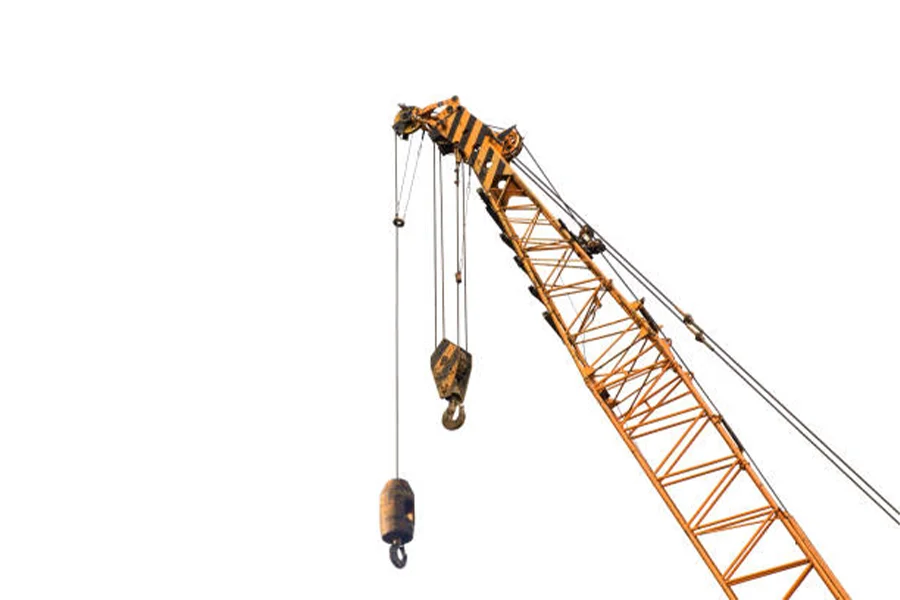
Features:
- It has an access ladder within the frame.
- It has a jib that is loaded with precast concrete blocks.
- It has a cab at the top of the tower where the operator sits.
Pros:
- It is very stable.
- It can carry weighty loads of up to 18 t.
- It is suitable for tall projects reaching a height of 80 m.
Cons:
- It is expensive to acquire and move from one place to another.
- It has high maintenance and repair costs.
- It is labor-intensive to install.
Rough terrain crane
Rough terrain cranes are cranes ideal for offroad applications. They are designed hardy and sturdy for those tasks.
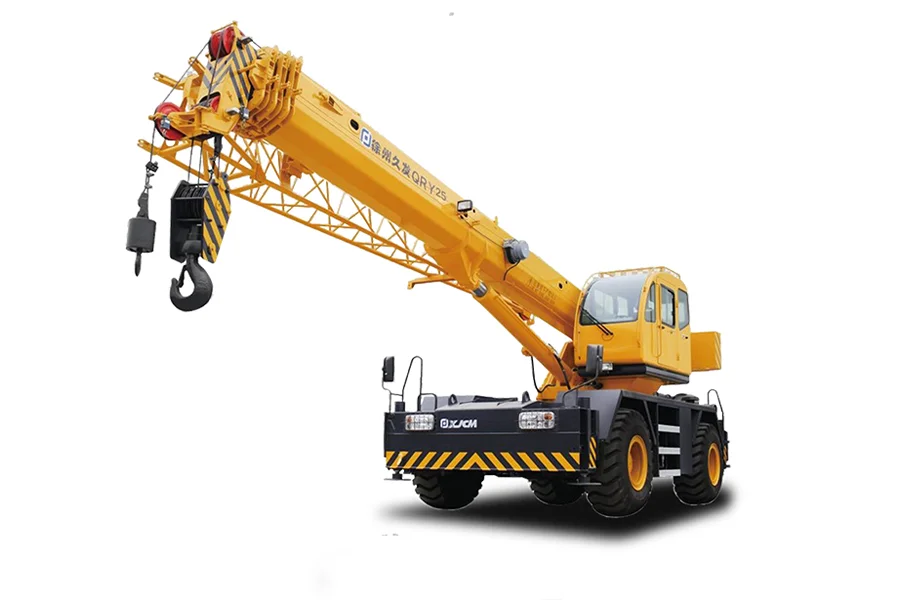
Features:
- It uses high-strength steel to withstand extreme temperatures.
- It has powerful engines and high traction efficiency to provide excellent grade ability.
- It has a low center of gravity.
Pros:
- It is powerful and movable.
- It offers excellent handling in rough terrain.
- It has enhanced stability and safety.
Cons:
- It has a limited load and lifting capacity.
- It needs to be stabilized with an outrigger.
- It cannot be driven on public roads or highways.
Overhead crane
An overhead crane is a machine that moves equipment from one place to another within a workshop.
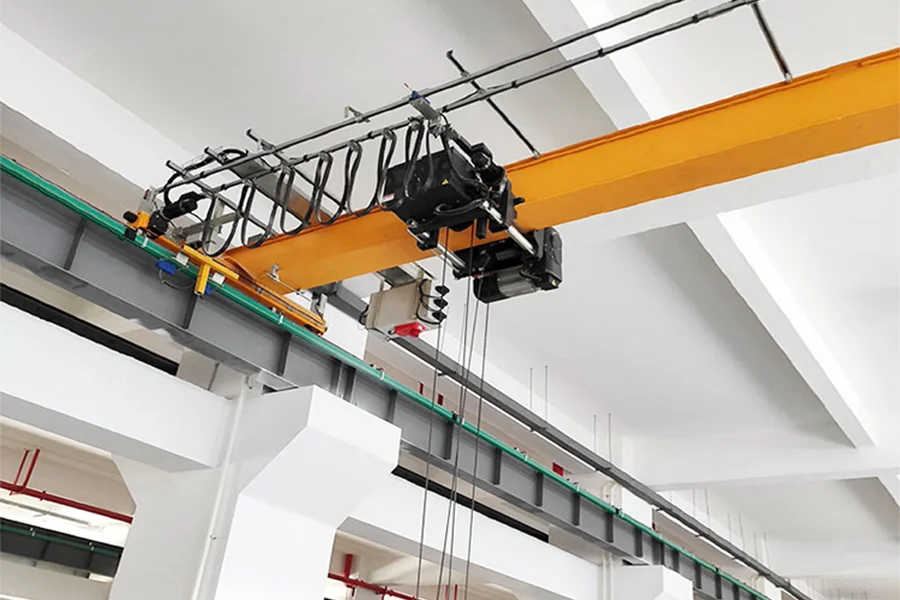
Features:
- It consists of two parallel rails on longitudinal beams.
- It is used in a room/workshop.
Pros:
- It increases workshop safety.
- It is easy to lift loads.
- It helps avoid floor obstructions.
- It has improved load control.
Cons:
- It has a high initial cost.
- It cannot lift loads over its height.
Loader crane
Loader cranes are cranes used to load and unload other trucks.
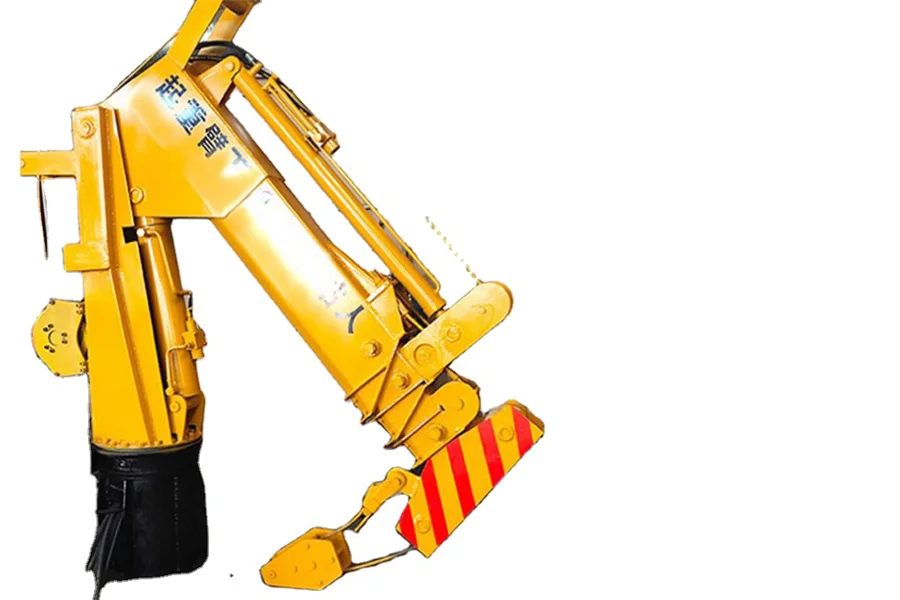
Features:
- It has an adjustable boom to lift loads.
- It uses an automated mechanism.
Pros:
- It is easily mountable on a truck.
- It can access many sites.
- It is easy to operate.
Cons:
- It is costly to acquire and maintain.
Jib crane
Jib cranes use a pillar fixed on the floor or the wall for support.
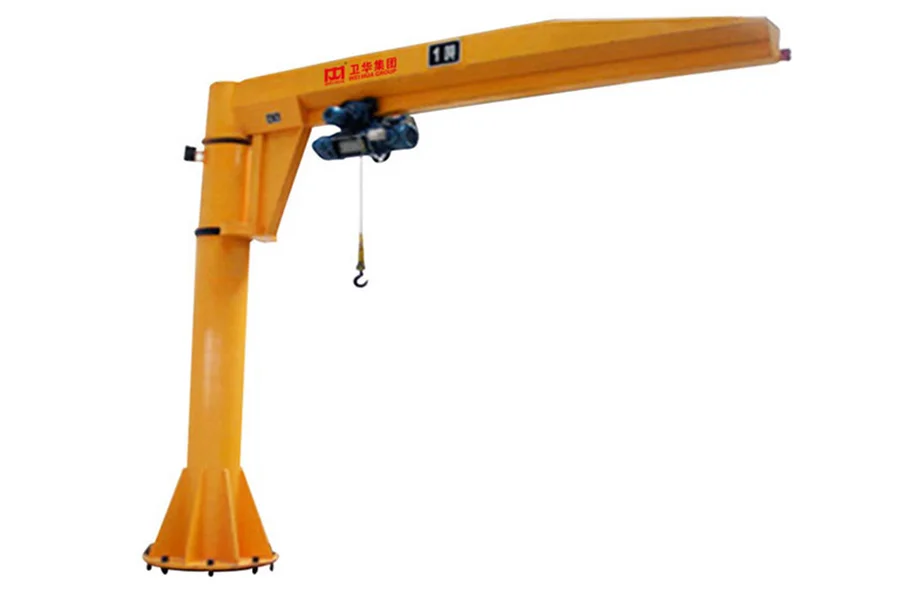
Features:
- It can rotate while holding the load.
- It works on hand-powered rotations and traverses motions.
Pros:
- It is inexpensive to purchase and maintain.
- It is easy to operate.
Cons:
- It is fixed in one place; hence that space cannot be used for another task.
Target market for cranes
Cranes are expected to grow at a CAGR of 4.5% to $49.64 billion by 2028. This is likely to result from the growth in the industrial sector globally and investments by governments and private entities in the construction sector. For example, the Asian and Latin American markets are placing a massive demand for machines capable of lifting 500 t and beyond. The Asia Pacific region will witness the most significant growth. China has commissioned 27 infrastructure projects worth $219.43 billion. The North American region is also expected to grow due to investments in the mining industry.
Conclusion
The crane business can be lucrative but only when done right. Without insight into pitfalls, a business could fail, and making a loss is inevitable. This guide points out the factors to consider before venturing into this business and the expected growth of this sector. In addition to this, the cranes’ section on Chovm.com can provide further information on cranes.





 বাংলা
বাংলা Nederlands
Nederlands English
English Français
Français Deutsch
Deutsch हिन्दी
हिन्दी Bahasa Indonesia
Bahasa Indonesia Italiano
Italiano 日本語
日本語 한국어
한국어 Bahasa Melayu
Bahasa Melayu മലയാളം
മലയാളം پښتو
پښتو فارسی
فارسی Polski
Polski Português
Português Русский
Русский Español
Español Kiswahili
Kiswahili ไทย
ไทย Türkçe
Türkçe اردو
اردو Tiếng Việt
Tiếng Việt isiXhosa
isiXhosa Zulu
Zulu